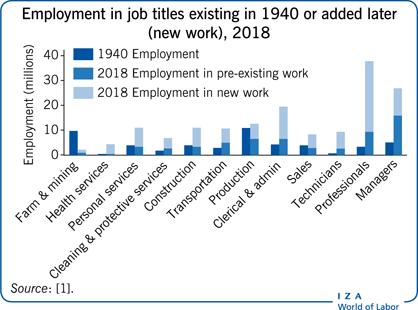Elevator pitch
The IT revolution has had dramatic effects on jobs and the labor market. Many routine manual and cognitive tasks have been automated, replacing workers. By contrast, new technologies complement and create new non-routine cognitive and social tasks, making work in such tasks more productive, and creating new jobs. This has polarized labor markets: while low-skill jobs stagnated, there are fewer and lower-paid jobs for middle-skill workers, and higher pay for high-skill workers, increasing wage inequality. Advances in AI may accelerate computers’ ability to perform cognitive tasks, heightening concerns about future automation of even high-skill jobs.

Key findings
Pros
Technology complements and creates many non-routine tasks, increasing productivity, quality, and innovation.
Big data and machine learning are increasing machines’ ability to perform cognitive, physical, and even some social (language) tasks, especially ones involving prediction.
Greater access to data, analysis tools, and telecommunications allows many workers to focus more on social interactions, collaboration, continuous improvement, and innovation.
This dynamic process creates many new types of jobs, products, and industries. Prior automation has never led to mass unemployment.
Cons
Machines substitute for humans in many routine manual and cognitive tasks, eliminating those jobs.
Labor markets have polarized, and inequality has risen, with relatively less demand for mid-skill workers and increased value for high-skill workers.
The pace at which machines gain the ability to perform cognitive tasks is faster than in the past, making adaptation by workers more difficult.
Older and credit-constrained workers displaced by automation face the most difficulties acquiring new skills and finding employment in other industries.
Market and tax incentives may inefficiently push firms toward too much automation rather than labor augmenting technologies.